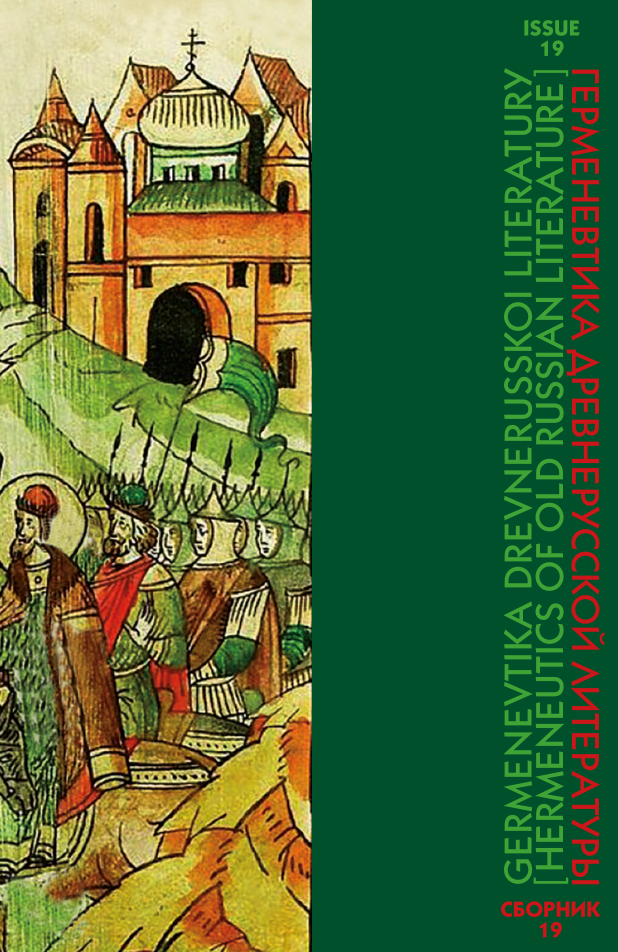Abstract:
In this article, the author discusses the archaic version of one of the most ancient Nativity hymns in Slavonic menaion “Angelic Powers, Go Forward”, which is already known from 12th c. GIM Sin. 162 and still performed on December 20, being attributed to the Byzantine poet of 6th c. Romanos the Melodist. The newly found Greek version of the hymn is published for the first time in Russian translation according to the 9th c. new tropologion Sinai Greek NE ΜΓ 56+ΜΓ 5. Its refrain “Blessed is the fruit of Thy womb” suggests the interpretation shift from the person of Christ to the person of Theotokos, and the redaction can be differentiated as “Marian.” It is originated in the the prophecy of Isaiah about the Virgin who will give birth to the Son of God, related to this feast already in the 5th c., according to the Jerusalem Armenian Lectionary (Is. 7: 10–17), and interprets the event as its fulfillment. Textological parallels in 9th–10th cc. Greek and Syro-Melkite manuscripts speak of the archaic redaction stability in the Christian East that time: the same refrain is to be found in 10th c. Sinai Syriac 48 and in 9th c. ΜΓ 56 + 5 for another “Romanos’ cycle” strophe; and in 9th–10th сc. Sinai Greek NE ΜΓ 58 a hymn for Theophany, which is modeled on this redaction. With the introduction of the Synaxis of the Holy Theotokos feast, after the official Sixth Council resolution (681), and the Marian hymnography concentration around it, the Nativity celebrations development, with its fore-feast days, and the christological hymnography concentration around them, a “traditional” version of the hymn, with the refrain: “Blessed is our God who was born, glory to Thee!”, along with the expansion of the Constantinopolitan rite in 10th c. became the main one in Greek, Georgian, Slavonic codices up to the present day. But the archaic, “Marian” one, retains its significance as this text history, and may still be discovered in Slavonic translations.
REFERENCES
1 Averintsev, S.S. “Grecheskaia ‘literatura’ i blizhnevostochnaia ‘slovesnost’’ (protivostoianie i vstrecha dvukh tvorcheskikh printsipov)” [“Greek ‘Literature’ and Middle Eastern ‘Literature’ (Confrontation and Meeting of Two Creative Principles)”]. Ritorika i istoki evropeiskoi literaturnoi traditsii [Rhetoric and the Origins of the European Literary Tradition]. Moscow, Shkola “Iazyki russkoi kul’tury” Publ., 1996, pp. 13–76. (In Russian)
2 Nikiforova, A. Iz istorii Minei v Vizantii. Gimnograficheskie pamiatniki VIII–XII vv. iz sobraniia monastyria sviatoi Ekateriny na Sinae [From the History of Menaion in Byzantium. Hymnographic Monuments of the 8th–12th Centuries. from the Collection of the Monastery of St. Catherine in Sinai]. Moscow, PSTGU Publ., 2013. 397 p. (In Russian)
3 Nikiforova, A. “Podobny v vizantiiskoi gimnografii. Etapy razvitiia (na materiale voskresnykh, rozhdestvenskikh, bogoiavlenskikh pesnopenii)” [“Similar in Byzantine Hymnography. Stages of Development (Based on Sunday, Christmas, Epiphany Hymns)”]. Przeglad Wschodnioeuropejski (East European Review), nο. 5/1, Olsztyn, 2014, pp. 185–197. (In Russian)
4 Bauer S., and A. Nikiforova, and G. Tucker. A ‘Hagiopolite-prototriodion’ in the new Tropologion Sin. Gr. NΕ ΜΓ 56+5: Quadragesima Hymns (OCP, в печати) (In English)
5 Cunningham, Mary B. The Virgin Mary in Byzantium, c. 400–1000 CE. Hymns, Homilies and Hagiography. Cambridge University Press, 2022. 275 p. https://doi. org/10.1017/9781009327244 (In English)
6 Frøyshov, S.R., and A. Nikiforova, and N. Smelova. “Byzantine Influence Before Byzantinization: The Tropologion Sinai Greek NE ΜΓ 56+5 compared with the Georgian and Syriac Melkite versions.” Religions journal, vol. 14, iss. 11, 2023. 1363. https://doi.org/10.3390/rel14111363 (In English)
7 Galadza, Daniel. Various orthodoxies, Feasts of the Incarnation of Christ in Jerusalem during the first Christian millennium / Prayer and Worship in Eastern Christianities, 5th to 11th Centuries, ed. By Brouria Bitton-Ashkelony and Derek Krueger. Routledge, 2016, pp. 181–209. (In English)
8 Koder, Johannes. Romanos Melodos. Die Hymnen. Erster Halbband. Stuttgart, Hiersemann, 2005. 379 p. (In German)
9 Krueger, Derek. “Liturgical Time and Holy Land Reliquaries in Early Byzantium.” Saints and Sacred Matter. The Cult of Relics in Byzantium and Beyond, ed. by C. Hahn and H. Klein. Washington, D.C., Dumbarton Oaks Research Library and Collection, 2015, pp. 111–131. (In English)
10 Lucà, Santo. “Scritture e libri in Terra d’Otranto fra XI e XII secolo.” Bizantini, Longobardi e Arabi in Puglia nell’alto medioevo. Atti del XX Congresso internationale di studio sull’alto medioevo (Savelletri di Fasano (BR), 3–6 novembre 2011). Spoleto, Centro italiano di studi sull’alto medioevo, 2012, pp. 487–548. (In Italian)
11 Nikolopoulos P. Τὰ νέα εὑρήματα τοῦ Σινᾶ. Athens, Ἱερὰ Μονὴ καὶ Ἀρχιεπισκοπὴ Ὑπουργεῖο Πολιτισμοῦ, ἵδρυμα Ὅρους Σινᾶ, 1998. 288 p.+ 240 tab. (In Greek)
12 Stichel, Rainer. “Die musizierenden Hirten von Bethlehem.” Lexicographica Byzantina. Beiträge zum Symposion zur Byzantinischen Lexikographie. (Wien, 1.– 4.3.1989), ed. by W. Hörandner and E. Trapp. Wien, Verlag der Österreichischen Akademie der Wissenschaften, 1991. S. 249–282. (In German)






